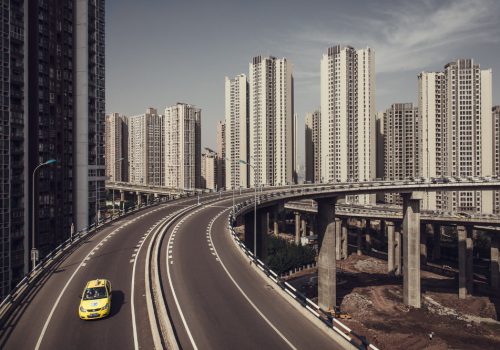Urbanization in China has grown dramatically from the 1990s and exceeded the 50% threshold for the first time in 2011. By 2050, according to the United Nations prognosis, the percentage of people living in urban areas will reach 77%. As a result, the continued development of real estate infrastructure has become integral to driving the country’s economic growth.
New residential buildings often arise in the heart of major cities in China that are under renovation, but they also appear around the periphery, creating new urban spaces by occupying the territory of the neighboring countryside. It is only in this particular setting that the sheer magnitude of the structures is revealed. Indeed, they are built in an almost pristine space, enacting a metamorphosis of the landscape that transforms from rural to urban – without any transitional phase.
Also noticeable is the aesthetic similarity of this architecture. A structural redundancy of concrete that reinvigorates and proclaims a futuristic vision: monolithic and obsolete.
This can lead us to question the opportunities for personal and human development in such a monotonous environment. Of course, it is acknowledged that this kind of modern housing does represent a considerable improvement in the daily lives of many new tenants. But can we not take advantage of this moment and use it to redefine or reinvent a new vision of urbanism? Can we not give a chance to architects to design a new form of housing, perhaps more adapted to the human scale and its conditions of development?
















